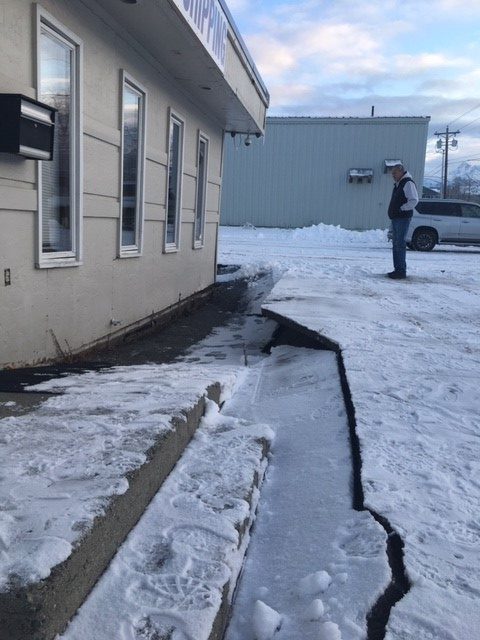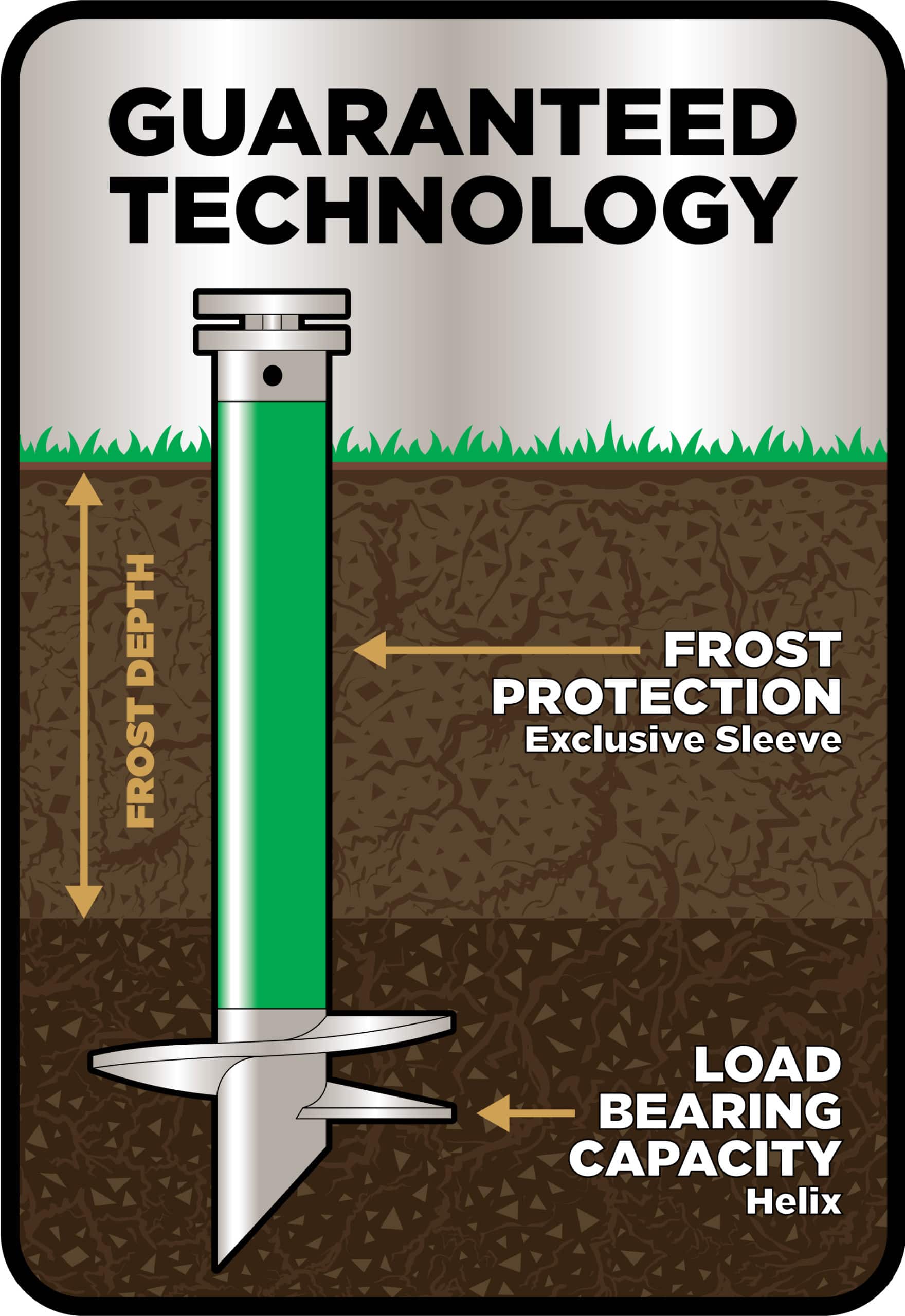Contact an installer
Contact an installer
Full project address
01
Most popular
02
Categories
Menu
close
01
Professionals

On November 30, 2018 back-to-back earthquakes and aftershocks (7.0 and 5.7 magnitudes) hit Anchorage, Alaska leaving behind it damaged roads, public buildings and houses. This devastation left significant foundation and structural collapses over a wide area. What they found in the aftermath was- structures that were built on Techno Metal Post (TMP) helical piles, were the ones that remained solid and strong.
Further down we explain how helical piles can be used to successfully repair these foundations, in order to prevent future damage. But first, let’s understand what happened.
In many cases, the ground beneath the foundations buckled during the earthquake, and the two main causes were:

Above- A foundation and surrounding soil that caved after the November earthquake in Anchorage, Alaska – notice the settlement expands beyond the footprint of the building, but not beyond the likely area of original excavation.
Techno Metal Post foundation piers are engineered and tested to the highest quality and standards, which guarantees durability, security, and sustainability of a structure’s foundation. Secondly, they are professionally installed, using proprietary hydraulic machinery. And finally, the piles are screwed into the ground by our certified technicians, until the required load-bearing capacity is reached, and secure footing is found. Only then, is it considered a ‘deep and solid foundation’.

The goal behind installing screw piles, is to bypass poor soil (such as peat, soft clay, or fill) and find denser ground to properly support the structural weight.
The exact weight a pile can support in a particular soil, has been predetermined by the engineering experts. If more weight needs to be added, the pile is simply installed deeper into denser and more stable soil.
After the November 2018 earthquake, TMP Alaska took elevation measurements of a recent foundation project, and saw that the house had remained leveled, and didn’t suffer any settlement during the quake. They also checked similar projects and discovered the same result: structures supported by TMP helical piles were not affected by the quake and remained the same as the day they were installed. TMP Alaska has almost 10,000 piles installed throughout the Anchorage and Mat-Su area and have had no reports of failures.
A two-story house remained intact and the deck piles that were used, also remained stable.
In January 24, 2016, another earthquake (7.1 magnitude) rocked South Central Alaska and was felt as far north as Fairbanks. An informal post-quake survey of TMP Alaska’s completed projects, demonstrated the confidence in our pile foundations for earthquake regions. After the January 24 quake, there weren’t any reports of issues with collapses or other damage, due to the (more than) 20 seconds of tremors. After inspecting many finished projects, there was no evidence of settlement, pile damage/movement, and no drywall cracking. Several houses and cabins on the Kenai Peninsula remained fully supported by TMP piles.

House on helical piles in Big Lake, Alaska.
While it’s known and widely accepted that helical piles perform better than traditional foundations in earthquakes, it isn't clear why that is. Until recently, helix piles had never gone under extensive testing during seismic events. That changed when the University of Oklahoma’s Amy Cerato Ph.D., P.E. decided to study and test the performance of helical foundation piers subjected to earthquake loads. She begins by mentioning the 2011 earthquake in Christchurch, New Zealand:
“After the series of earthquakes in 2011, the city of Christchurch was surveyed, and it was found that all buildings/infrastructure constructed on helical piles sustained minimal structural damage, however, a large majority of the condemned buildings were constructed on other foundation types. The international community has qualitative proof that helical piles perform well in earthquake prone areas, but engineers have not quantified “why” those piles are superior foundation elements, and unfortunately, helical pile use in seismically active areas within the United States remains minimal. Therefore, this project seeks to find out ‘why’ helical piles seem to behave so well in seismic regions by subjecting them to earthquake loads in the University of California – San Diego’s Large Shake Table.”
Now, through testing and actual seismic events like the ones in Alaska, Dr. Cerato’s hypothesis continues to be accurately supported: “The international community has qualitative proof that helical piles perform well in earthquake prone areas.”
In 2016 at the University of California, San Diego (Jacobs School of Engineering), the seismic testing of helical piles was carried out, on the world's largest outdoor shake table. The results of the tests were very positive, demonstrating what we have always believed: Helix piles remain strong and stable during seismic activity.
Dr. Cerato’s research continues and her early work indicates that her hypothesis is correct. This helping to finally explain “why” they perform so well in earthquakes.
SOURCES
SCREW PILES
WITH TECHNO METAL POST, IT'S FAST AND EASYTechno Metal Post makes life easier for anyone with a construction project that requires a foundation in almost any type of soil.